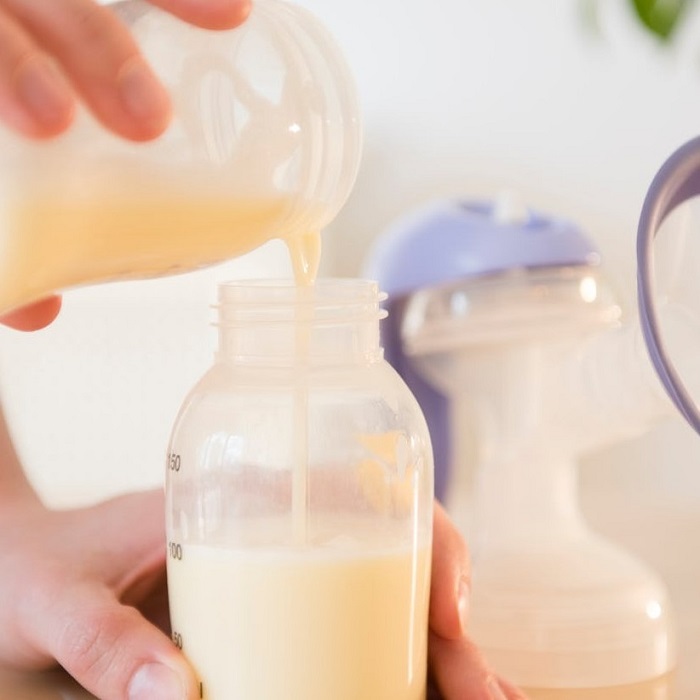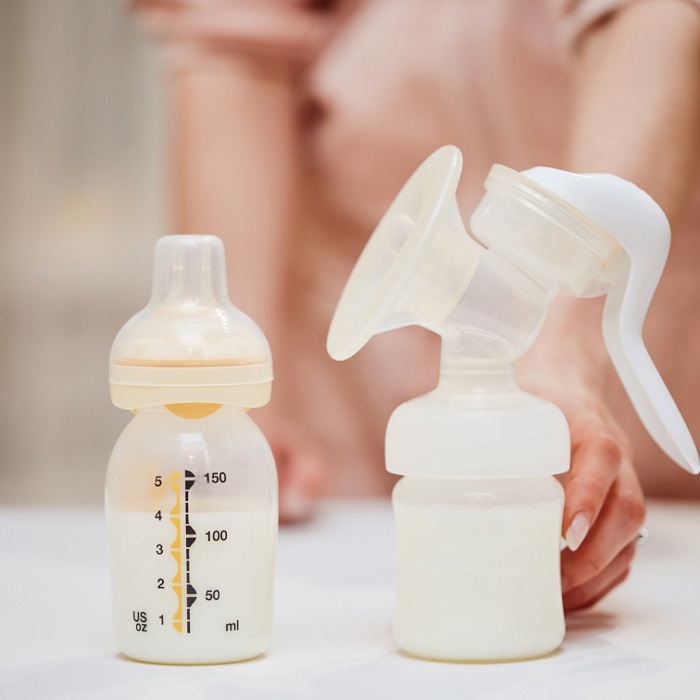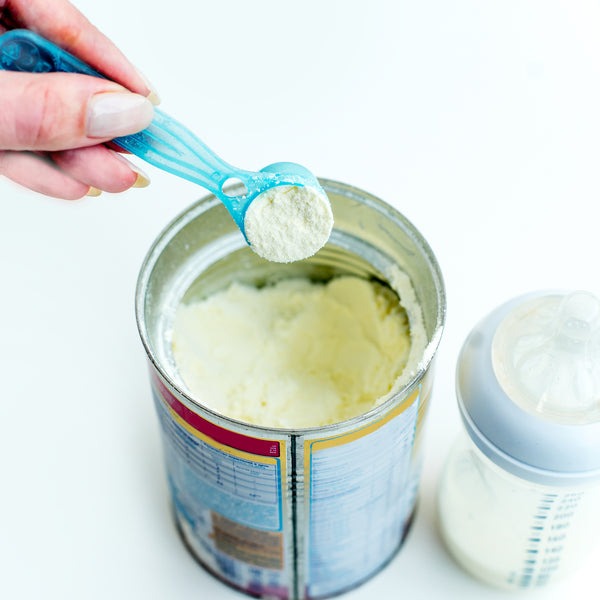Using both breast milk and formula for your baby can be a daunting decision for many parents. One common question arises: can you mix breast milk and formula? This inquiry is crucial, especially for new mothers navigating the complexities of infant feeding. In this guide, we will explore the nuances of combining these two nutritional sources, addressing common concerns and providing essential information.
Understanding Combo Feeding Basics
When parents delve into the world of infant feeding, combo feeding comes up as a viable option. This method involves giving a baby both breast milk and formula. The combination can provide the nutrition babies need while catering to various scheduling and lifestyle needs of families.
Can You Mix Formula and Breast Milk?
Yes, you can mix breast milk and formula safely. Many doctors support this as a practical approach to nourishing your baby. It’s all about ensuring proper preparation and hygiene. Combo feeding can bridge gaps in nutrition or personal time constraints.
Why Parents Might Choose Combo Feeding
Parents opt for combo feeding for diverse reasons. Some might not produce enough breast milk, while others might be returning to work. Combo feeding offers flexibility and can involve others in feeding the baby, which promotes bonding and gives parents a break.
Benefits of Combo Feeding

Integrating breast milk and formula offers notable benefits, making it an attractive option for many parents. By understanding the perks, you can make an informed decision on whether combo feeding aligns with your family’s needs.
Nutritional Advantages for Your Baby
Combo feeding ensures your baby gets all essential nutrients. Formula offers vitamins and minerals that might be less abundant in breast milk. This combo meets your baby’s growing demands. It also helps if you have concerns about your milk supply. By adding formula, your baby gets enough to eat every time.
Flexibility for Parenting Schedules
For parents, combo feeding brings much-needed flexibility. Breast milk can be paired with formula when you are working or need a break. This means your baby can still benefit from breast milk, even when you cannot be there. It also lets other family members feed the baby, which supports bonding and gives you more freedom. Overall, combo feeding can mean more rest and less stress for parents.
How to Introduce Formula to Breastfed Babies
Introducing formula to a breastfed baby can be a significant change for both mother and child. It is essential to take a gradual and patient approach. The goal is a smooth transition that maintains the baby’s health and comfort.
Starting with Formula: A Step-by-Step Guide
- Choose the Right Time: Begin at a time when your baby is not too hungry or fussy. This reduces stress for everyone.
- Select a Suitable Formula: Pick a formula that meets your baby’s dietary needs and, if possible, one that is closest to breast milk.
- Start Slow: Introduce formula by replacing one breastfeeding session with a bottle. Continue with breastfeeding as usual for other feeds.
- Quiet and Comfort: Feed your baby in a calm environment. Hold your baby close to replicate the breastfeeding bonding experience.
- Observe Reactions: Watch for any signs of digestive discomfort or allergies. If concerns arise, consult your pediatrician.
Balancing Bottle and Breastfeeding Techniques
- Alternate Breasts and Bottle: When breastfeeding, switch between the breasts and formula-feeding to avoid preference.
- Maintain Skin-to-Skin Contact: Skin contact is comforting for babies and can help during bottle feeding.
- Use Nipple Similar to Mother’s: A bottle nipple akin to the mother’s can make bottle feeding easier for the baby to accept.
- Paced Bottle Feeding: Mimic breastfeeding rhythm by allowing the baby to take breaks and breathe during bottle feeds.
- Stay Consistent: Consistency in feeding times and methods helps the baby adapt more quickly to the new feeding pattern.
When introducing formula, expect minor hiccups as your baby adjusts. If mixed feeding seems to affect your baby’s breastfeeding, take steps to encourage continued breastfeeding. It’s all about finding a balance that works for your family.
Maintaining a Healthy Breast Milk Supply

When combo feeding, sustaining a robust breast milk supply is vital. This section explores practical tips and the supply and demand nature of breastfeeding that can help mothers maintain a healthy milk supply even when supplementing with formula.
Tips for Keeping Up Milk Production
Maintaining a healthy breast milk supply while combo feeding involves intentional practices. Here are several key tips:
- Nurse Often: Breastfeed when you’re with your baby to stimulate milk production.
- Pump Regularly: If you’re away, pump milk at times when your baby would normally feed.
- Stay Hydrated: Drink plenty of water to keep your milk production up.
- Healthy Diet: Eat a balanced diet rich in vitamins and minerals.
- Avoid Stress: Stress can affect milk supply, so find ways to relax and unwind.
- Consult Experts: Connect with a lactation consultant for personalized advice.
By following these steps, you can ensure that your baby enjoys the benefits of breast milk even as you incorporate formula into their diet.
Recognizing Supply and Demand in Breastfeeding
Breast milk production is a game of supply and demand: the more your baby feeds, the more milk you produce. When you introduce formula, it’s crucial to manage this balance carefully.
- Monitor Baby’s Feeding: Keep tabs on how much your baby feeds to adjust your pumping schedule.
- Match Pumping with Feeding: Try to pump around the same time you’d feed to maintain supply rhythms.
- Be Responsive: If you notice a dip in supply, increase nursing or pumping frequency.
- Baby’s Growth: As your baby grows, they’ll need more milk, so be prepared to adapt.
- Listen to Your Body: Your body gives cues. If breastfeeding feels less frequent, consider more skin-to-skin time or additional pumping sessions.
With an understanding of these dynamics, you can successfully manage a mixed feeding routine without compromising your breast milk supply.
Safely Storing and Handling Breast Milk and Formula
When you combine breastfeeding with formula feeding, storing and handling both correctly is very important. Doing it right keeps the milk safe for your baby. In this section, we will cover the best ways to store breast milk and formula. Also, we’ll talk about how to avoid safety issues.
Best Practices for Storage
Here are some top tips for storing breast milk and formula:
- Chill Properly: Keep breast milk in the fridge for up to four days. Store formula for 24 hours.
- Freeze for Later: Freeze breast milk if you’re saving it for much later. It can stay good for six months.
- Keep It Cool: If you’re not home, use a cooler bag with ice packs for breast milk.
- Warm Wisely: Never heat milk in a microwave. Use a bottle warmer or warm water instead.
- Label Bottles: Write the date on milk bottles before you store them. This helps to use the oldest first.
Food Safety Concerns and Precautions
Make sure the milk stays safe when you’re mixing breast milk and formula:
- Keep It Clean: Always wash your hands before handling bottles and nipples.
- Sterilize Equipment: Before first use, sterilize bottles and nipples. Then, clean them well after every use.
- Mix Right: Follow the formula’s instructions exactly. Don’t swap water for breast milk in formula.
- Test Temperature: Always check milk warmth before feeding. It should be just above room temperature.
- Use or Lose: Throw away any milk left in a bottle after a feed. Don’t keep it for later.
By following these guidelines, you can help ensure your baby’s milk is stored and prepared safely. This is key for your baby’s health and your peace of mind while combo feeding.
Managing the Challenges of Combo Feeding

While combo feeding offers many benefits, it’s not without its challenges. Parents may encounter a few bumps along the way as they navigate this feeding method.
Overcoming Potential Hurdles
Certain issues can arise when combining breast milk and formula. Here are common problems and how to solve them:
- Milk Supply Concerns: Introducing formula may lead to a reduced milk supply. To combat this, continue breastfeeding often and pump regularly.
- Nipple Confusion: Babies might get confused between the breast and bottle nipples. Use a bottle nipple that mimics the natural breast shape to help with this.
- Digestive Adjustments: Your baby’s digestive system may need time to adjust to formula. Introduce it slowly and monitor for any discomfort.
- Scheduling Feeds: Finding the right balance between breast and bottle feeding can be tricky. Maintain a consistent feeding schedule as much as possible.
If these steps don’t help, consult your healthcare provider for additional guidance.
Weaning and Frequency of Feedings
When deciding to wean off breastfeeding or to adjust the frequency of feedings, here are some points to consider:
- Gradual Weaning: Slowly replace breast milk feeds with formula to help your baby adjust.
- Observe Baby’s Cues: Watch your baby’s signals to gauge if they’re ready for more formula or need more frequent feedings.
- Stay Flexible: Babies’ needs may change. Be ready to alter the feeding plan when necessary.
- Consult Professionals: Speak with a lactation consultant or pediatrician to create a personalized weaning plan.
By tackling these challenges head-on and adjusting as needed, you can ensure a smoother combo feeding experience for you and your baby.
Final Thoughts and Tips for Successful Combo Feeding
As you approach the combo feeding journey, remember these final thoughts and tips.
Engaging Healthcare Professionals
Start by talking to your doctor or a lactation consultant. They offer personalized advice based on your situation. They can help you keep up your milk supply when adding formula. Make regular check-ins with them a part of your routine.
It’s crucial to monitor your baby’s reaction to combo feeding. If there are issues like allergies or poor growth, speak to a pediatrician. They can suggest changes to your feeding plan.
Emotional Support and Community Resources
Find a support group for parents who combo feed. Sharing experiences can ease your worries and give you new ideas. Seek out family and friends who back your choice to combo feed. Their encouragement makes a big difference.
Use online forums and local parenting groups for more support. They offer tips and can help you connect with others in your situation.
Tap into community resources, too. Look for classes or workshops on combo feeding in your area. They teach you more about mix feeding and can connect you with local experts.
By keeping these final points in mind, and with the right support, you can make combo feeding a success. It offers a balance that benefits both baby and parents alike.